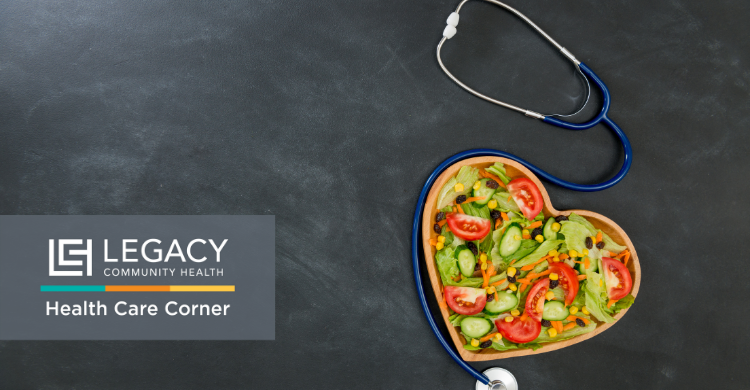Living with diabetes doesn’t mean you can’t have what you crave. The trick is knowing how to manage the craving.
By Ileana Martinez, Registered Dietitian
This year’s national nutrition month theme invites us to embrace global cultures and cuisines by celebrating a “world of flavors”. As a Diabetes Care and Education Specialist I have a particular interest in helping people living with diabetes and enjoy their cultural foods, all while being able to keep their blood sugar levels under control.
People with diabetes can still enjoy flavorful dishes and their favorite cultural foods. Here are four simple tips you can start applying to prevent big glucose spikes and to help you stay in your blood sugar target range. Following these tips may also help improve your energy and sleep, decrease cravings and hunger, and so much more. The best part: Anyone can benefit from following these tips, not just people with diabetes.
Eat your carbs last.
Try starting your meals with a vegetable appetizer or a source of protein like chicken, fish, or eggs. Believe it or not, the order in which we eat food actually matters. According to a 2015 study, researchers found that participants that ate vegetables and protein before they ate the carbohydrates had lower sugar levels after the meal, compared to people that started eating the carbohydrates first. Therefore, I recommend veggies first, then protein and fat, and starches and sugar last. If your meal has all of them combined just try to make the veggies and protein the biggest portion.
Start your day with a savory instead of sweet breakfast.
In the morning hours, we produce hormones that causes our blood sugar to raise. If we start our day with a typical sweet breakfast like pancakes, cereal, toast with jelly, or sweet oatmeal, our sugar levels will raise even more and our bodies will have a difficult time bringing it down. Instead, try starting your day with:
- Eggs and veggies with a whole grain toast or tortilla.
- Chia pudding with berries and cinnamon.
- Plain Greek yogurt with berries and nuts or seeds.
- Avocado toast with ham, cheese, and tomato.
Avoid drinking your carbohydrates.
There are plenty of options in the market that are either low-sugar or unsweetened. For those moments when you’re really craving something sweet, try sweetening with stevia, monk fruit, or erythritol.
When eating sweets, eat them as a dessert instead of as a snack or a meal.
When we eat sweets as a dessert, we tend to eat smaller portions because we are already satisfied from our meals. Eating them on an empty stomach will lead to a greater glucose spike and subsequent hunger and cravings.
March is National Nutrition Month. To schedule a consultation with a Legacy RDN, ask your Legacy provider for a referral today. To schedule an appointment, call (832) 548 5000 or visit www.legacycommunityhealth.org.

